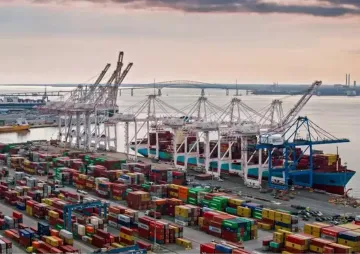
As Narendra Modi’s Season 2 begins with the swearing in of his Council of Ministers tomorrow, 30 May 2019, every political analyst worth his analysis has a view on what its composition should be. Amid smoking sessions, around coffee machines, over dal-roti in Khan Market and tinkling cocktails inside and outside Lutyens’ Delhi, some are putting their necks out and holding forth on what it will be. Big names are being bandied about – this minister is unwell, that minister weak; this minister is a non-performer, that one a dark horse; this minister is out; that one in. Finally, there is the discourse around ‘new faces’.
Beyond these inevitable conversations of India’s argumentative democracy lie some old-favourite confines. India is a young country, so the average age of the Cabinet should be lower. The representation of women in successive Cabinets has been low and that must change. The presence of lower castes, victims of centuries of subjugation by the higher castes, needs to get more representative and the Cabinet should be a good starting point. Finally, the engagement of religious minorities in India’s highest policymaking body, the Cabinet, is low and needs to be corrected.
Noble as these ideas may sound, they are little more than virtue-signalling. They may stand on a strong moral stool but have zero Constitutional support. In an ideal world, all of these must happen. And on the gender front, Modi has already made a start, with six out of 25 Cabinet ministers being women – Sushma Swaraj (External Affairs), Uma Bharati (Drinking Water and Sanitation), Maneka Sanjay Gandhi (Women and Child Development), Harsimrat Kaur Badal (Food Processing Industries), Smriti Zubin Irani (Textiles), and Nirmala Sitharaman (Defence). At 24%, this is the highest number of women Cabinet ministers in the Indian government.
Likewise, the average age of the Cabinet stands at 62.2 years, with Smriti Zubin Irani, Dharmendra Pradhan and Harsimrat Kaur Badal the youngest at 42, 49 and 52 respectively. On the other side, Ramvilas Paswan, Chaudhary Birender Singh and Thaawar Chand Gehlot are the oldest at 73, 73 and 71 respectively. Analysts have argued that the average age of ministers needs to go lower but there are no valid arguments in its favour. Given better healthcare, higher longevities, and visible action, age as an efficiency-diminutive may no longer be valid. Grey hair need not necessarily crush or misrepresent the aspirations of the young.
By focussing on the idea of inclusiveness in Cabinet composition, we tend to confuse institutional structures with institutional outcomes. The structure of the Council of Ministers is crafted to deliver specific political, economic and social outcomes
But let’s step back from these restrictive confines. By focussing on the idea of inclusiveness in Cabinet composition, we tend to confuse institutional structures with institutional outcomes. The structure of the Council of Ministers is crafted to deliver specific political, economic and social outcomes. When we dilute its composition with issues such as age, gender, caste or religion, we do a disservice to the institutional structure. We need to see the Cabinet as an extension of the Prime Minister. This has been thought through and written into the Constitution, under Article 75(1): “The Prime Minister shall be appointed by the President and the other Ministers shall be appointed by the President on the advice of the Prime Minister.” (We are leaving out the politics behind that goes into the Prime Minister making that decision.)
Taken together, the Council of Ministers, of which the Cabinet is hierarchically the top decision-making body, needs to be seen as a cohesive team. In the last reshuffle of Modi Season 1, the Cabinet comprised 42% of the 60-strong Council of Ministers. All key portfolios are held by Cabinet ministers. This includes the Big 4 – Home (Rajnath Singh), Finance (Arun Jaitley), Defence (Nirmala Sitharaman) and External Affairs (Sushma Swaraj). As in Season 1, so in Season 2, it is this team that needs to work to deliver the big outcomes of internal security, the economy, external security and international relations. They not only need to work closely with Modi but among themselves too.
Clouding such sensitive and crucial decisions with institutional outcomes of delivering greater inclusiveness to India by way of gender, caste, religion or age is investing time capital on the wrong delivery mechanism. The best person for the job – that must be the sole criteria. Modi Season 2 has come with a greater majority and is not burdened by the ‘coalition dharma’ that had slowed the Manmohan Singh government. He doesn’t need to be pulled down by the weight of non-merit considerations.
Modi Season 2 has come with a greater majority and is not burdened by the ‘coalition dharma’ that had slowed the Manmohan Singh government. He doesn’t need to be pulled down by the weight of non-merit considerations.
That said, in his 25 May 2019 speech to National Democratic Alliance (NDA) Parliamentary Party meet at Central Hall of Parliament, Modi spoke of taking the entire country together, and this will show up in his Council of Ministers. But in his Cabinet, and particularly the Big 4, he will bring what he thinks to be the best person. As a body, we expect the Council of Ministers to pull their weight and fix the gaps in India’s society on gender, caste and religion. As a nation, we expect them to rephrase its political conversations that befit a $3 trillion economy that has $5 trillion within sight and aspires to become a $10 trillion economic powerhouse by 2032.
What we can be absolutely sure about the composition of Modi’s Season 2 Cabinet are four key traits of ministers. First, they will all be, without exception, individuals with extremely high execution capabilities – Modi’s vehicle of Verdict 2019 has been governance delivery and this will continue into 2024. Second, they will all be, without exception, good soldiers in spirit and will translate into action at the policy level what deliberations will do in their meetings with Modi. Third, they will all be, without exception, economical with their words and actions in public – this Modi firmly stated in his 25 May speech. And finally, they will all be, without exception, loyal to Modi.
The views expressed above belong to the author(s). ORF research and analyses now available on Telegram! Click here to access our curated content — blogs, longforms and interviews.




 PREV
PREV



